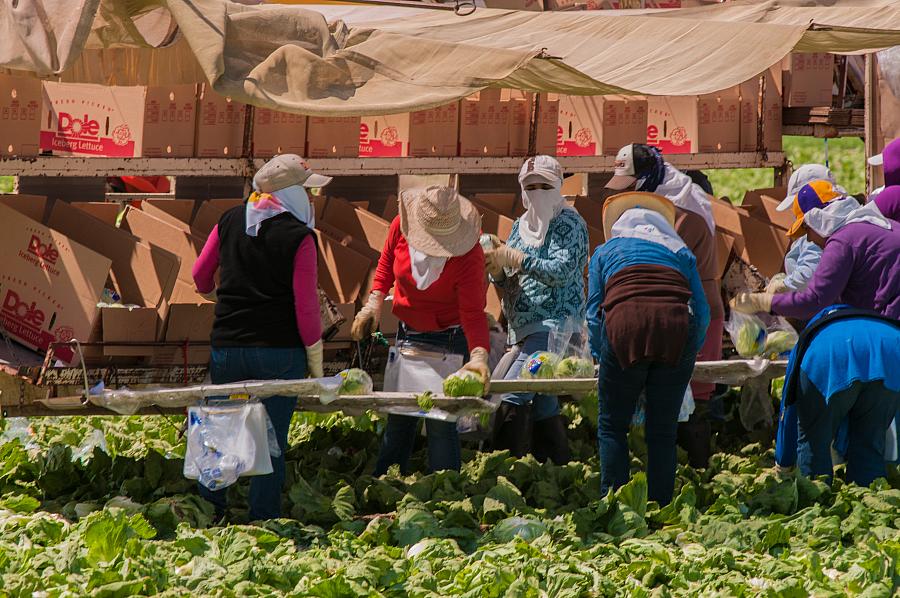Bill to extend coverage to undocumented shelved, but other ideas exist

Farmworkers pick lettuce in Central California.
A two percent increase in Medi-Cal spending — or about $360 million — would give about 700,000 undocumented Californians access to routine and preventative healthcare in 2015.
That’s the conclusion of a May 2014 report by UC Berkeley’s Center for Labor Research and Education and the UCLA Center for Health Policy Research.
The findings come as a bill that would extend coverage to undocumented immigrants stalled in California’s state legislature last week. SB 1005, proposed by State Sen. Ricardo Lara, would use state money to provide insurance for those previously ineligible due to their immigration status, a move criticized for extending a safety net that’s already overstrained.
While the senate bill may be stalled for now, other options to insure undocumented immigrants are pushing forward – such as a Salinas effort that would fund plans with employers’ dollars.
The forecasting model, developed by UC Berkeley Center for Labor Research and the UCLA Center for Health Policy Research, took into account what the state already pays for costly services such as emergencies and pregnancy. And it offset the spending with savings that would come from increased sales tax revenue from managed care organizations as well as reduced county spending on the uninsured.
The model also examined how much undocumented Californians actually use health services. A recent study found those adults go to the doctor less than citizens and legal immigrants. (Even among eligible immigrants, cultural and linguistic barriers as well as feelings of fear and mistrust may keep them from enrolling in public program, this report found.)
Over time, the model predicts enrollment would likely increase as a result of the state’s population growth, as well as people learning more and feeling more comfortable enrolling. In 2019, costs would grow to about $430 million and include more than 750,000 people.
The Senate bill, shelved last week, could be revived if the state finds a ways to pay for the expansion. That would make California the first state to allow all low-income residents – including those who are in the country illegally — to enroll in its health insurance program.
In recent years, California has taken the lead nationwide in adopting policies that expand the rights of undocumented immigrants. The state enacted the 2011 Dream Act, which extends financial aid benefits to undocumented immigrants who came to the country as children. And more recently, the state made national headlines for agreeing to issue driver’s licenses to illegal immigrants. (That effort hit a roadblock this month with news that the design of the licenses design violated federal law.)
While the Lara bill may be shelved, other efforts to provide health insurance for those excluded by existing reforms are also in the works.
In Monterey County, the CEO of Clinica de Salud del Valle de Salinas, a group of safety-net clinics, is exploring a strategy that would bring together partners in local industries such as agriculture and hospitality to create employer-funded options.
At a Sacramento conference on insuring the uninsured earlier this year, chief executive officer Dr. Max Cuevas explained his thought process:
Can we do something different for the undocumented community? They’re not going to be covered under health care reform. And so how are they going to access services?
There are some challenges to the model, he acknowledged, such as who exactly would be covered in an industry that revolves around seasonal employment.
Still, he said he’s optimistic a plan could be worked out that would enable more residents and their families to receive health coverage.
“The partners that we’re working with are fully engaged and are interested in making that happen — it’s something that’s never been seen before,” Cuevas said. “But it’s exciting to look at the glitches, and try to figure it out and try to make it happen. At least in a rural county such as Monterey County, I think it’s a viable, doable model that we’re looking to be sustainable for the future.”
Photo by USDA via Flickr.
